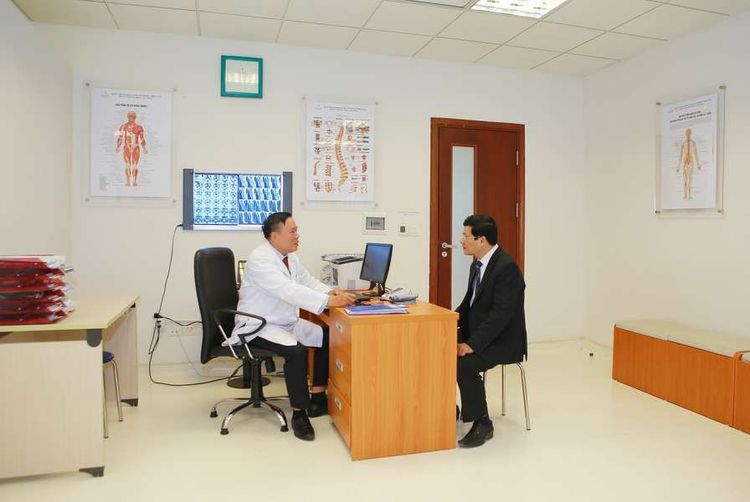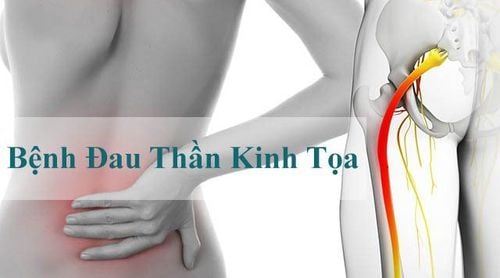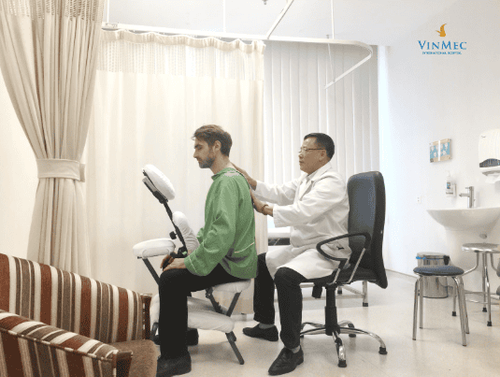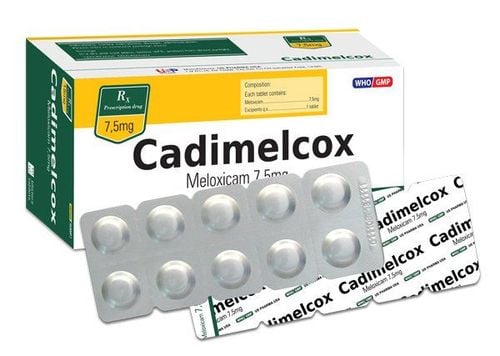This is an automatically translated article.
The article is professionally consulted by Master, Specialist I Nguyen Thi Thanh Binh - Rehabilitation Doctor - Department of General Surgery - Vinmec Danang International Hospital.
Sciatica (also known as the sciatic nerve and its branches) is a neurological syndrome characterized by pain along the path of the sciatic nerve from various causes, including disc disease. causing compression on the sciatic nerve root accounts for the highest percentage (nearly 80% of cases), in addition to other causes such as congenital abnormalities of the lumbar spine, inflammation at the site or adjacent areas. near the sciatic nerve, diseases that cause nerve damage such as diabetes, inflammation or hypertrophy of the pyramidal muscle (also called pear muscle syndrome), ductal stenosis, trauma to the sacral spine, cancer spinal cord, spine or tumors from other places metastasize to the spine...
Sciatica is common in the age group from 30-60 years old, affecting work and living in different degrees from mild to severe. Exercise that improves and strengthens the back while increasing flexibility in the hips and lower body will significantly reduce lower back pain and other symptoms of sciatica.
1. The role of conservative treatment measures for sciatica
Sciatica, like any other medical condition, should be examined and consulted by a specialist about the condition of the disease, in order to determine the appropriate treatment methods such as conservative treatment or treatment. surgical intervention.Conservative treatment is the use of drugs, methods of affecting the spine - chiropractic adjustments, movement exercises, massage, physical therapy methods...
In most cases, patients respond well to treatment. Treatments are conservative and the pain goes away after a period of several weeks.
Conservative treatment is a good option for patients with sciatica, because there are statistical reports that nearly 50% of all cases of sciatica have improved symptoms within 1 year. ,5 months from diagnosis. Obviously, conservative treatments will take longer to work than surgical treatment, surgery is an interventional treatment and has its own risks (such as bacterial infection). , bleed,...). It is important for patients to keep in mind that it is important to visit your doctor to advise on the right treatment for you.

Vị trí dây thần kinh tọa
2. Exercises to help relieve pain for patients with sciatica
Exercises that help relieve pain will focus on two main issues, that is, improving and strengthening the back, and increasing the flexibility of the lumbar region and the hamstrings.The muscles around the spine and abdominal muscles can be too weak, or contract the muscles excessively, leaving the spine and body not supported properly. Poor posture and inappropriate muscle response to the state of the spine lead to an increased risk of lower back pain and sciatica. Gentle exercises that strengthen the back will help improve posture and spinal responsiveness, reducing the likelihood and severity of back pain and sciatica. If you are recovering from sciatica, you should avoid activities with a high risk of collision, such as jogging or playing heavy sports. Tight hamstrings, glutes, and hips will affect posture and increase pressure on the lower back, which in turn affects sciatica. The hamstrings include the biceps, semi-tendons, and semi-membranous muscles, while the gluteus group includes the gluteus maximus, gluteus medius, and gluteus medius. In most cases of sciatica, there will be a marked analgesic response to exercises that stretch the hip and hamstring muscles, and alleviate the spasm in the piriformis. Being inactive for a long time or sitting for too long increases the pressure on the pear muscle, causing pain to appear and get worse.

Bài tập giúp giảm đau thần kinh tọa tại nhà
Stretching exercises 1: Lie straight on a hard surface, bend your knees, and put your feet on the floor. Raise your left leg, crossing it to the right, just above the right knee. Keeping the position of the right thigh, slowly pull the left leg up towards the chest until the body feels a stretch in the buttock area. Hold the pose for 10 to 30 seconds. Repeat the movement, but with the other leg. Stretching exercise 2: Lie flat on a hard surface, legs straight. Using one hand, lift the opposite knee, gradually drawing the knee toward the shoulder of that hand. Hold the pose for 10 to 30 seconds. Repeat the movement, but switch sides. Stretching exercise 3: Sit on a hard surface with your legs fully extended. Bend right leg, bringing it toward torso so that the outer ankle is above the left knee. Bend forward, so that your upper body touches your thighs. Hold the pose for 15 to 30 seconds. Repeat the movement, but switch sides. Stretching exercise 4: Kneel on a hard surface, hands on the floor. Lift the entire right leg up, bring it forward, and then place the entire thigh, shin, and foot on the floor (the shins should be in a diagonal position perpendicular to the torso, feet perpendicular to the shins) . The left leg is fully extended behind, the left knee and toe are on the floor, the left heel is pointing up to the sky. Gradually release the support of the arms, so that the body will be fully supported by the legs. Bend forward, down to your feet. Take a deep breath in. When exhaling, lift your body up with your hands and return to the starting position. Repeat the movement with the opposite side. During exercise, patients should pay attention to their own safety, because each individual's ability to exercise and flexibility is different. Choose the right exercise for yourself, gradually increase the difficulty over time, and practice persistently to achieve the highest efficiency.

Người bệnh có thể đến cơ sở y tế để được bác sĩ tư vấn và điều trị bệnh
Customers who need medical examination and treatment can directly go to Vinmec International General Hospital nationwide or contact the hotline HERE.
Reference article source: healthline.com
SEE MORE:
Find out how to cure with spinal impact Sciatica: Causes, symptoms, diagnosis and treatment Complications of spinal disc herniation waistline














